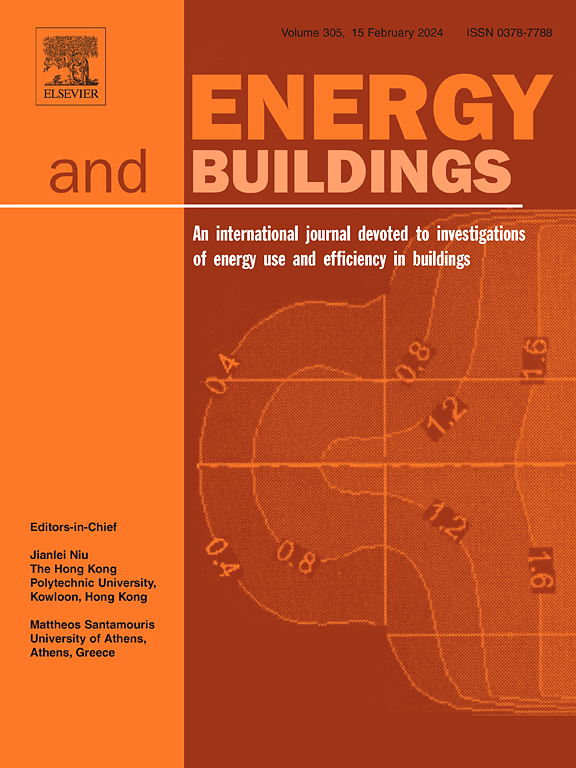Examining the reasons for changes in buildings’ energy consumption in the United States, China and the European Union
IF 6.6
2区 工程技术
Q1 CONSTRUCTION & BUILDING TECHNOLOGY
引用次数: 0
Abstract
Buildings are responsible for one third of global operational energy consumption and greenhouse gas (GHG) emissions. Addressing their impact requires the development and monitoring of effective policies, supported by detailed and costly data on building stock and energy use as well as their corresponding analysis. The paper proposes a pyramidal approach to decompose buildings’ energy use into drivers —activity, structure, and efficiency— considering factors like population, floor area, urbanisation, building size, occupancy and climate. Energy-use intensity measures efficiency, while shifts among the residential and tertiary subsectors are captured as structural impacts. The relevance of the methodology is underscored by its potential to assess and quantify the causes of energy consumption changes, guiding policy-making. Applying this approach to China, the United States (US) and the European Union (EU), the paper criticises the lack of data, disaggregates energy consumption changes, outlines policy implications and validates the methodology’s added value. The analysis reveals the increased floor area as the primary driver of rising energy consumption over the past two decades (contributing to changes by 9% in the US, 24% in the EU and 97% in China). This may be reduced by managing urbanisation rates and compensated by an improvement in efficiency. While this has been sufficient to stabilise consumption in the EU, a slight rebound is observed in the US due to the increase in population and in the demand for buildings per capita. In China, the urbanisation trend behind the rise in energy demand is approaching EU levels, highlighting the importance of mindful actions to ensure the sustainability of future expansion. Despite the limited geographical coverage, this study provides a pertinent analysis of almost half of the building energy consumption in the world (China, the US and the EU), offering insights into the sector’s current state and directions for future policy development.

求助全文
约1分钟内获得全文
求助全文
来源期刊

Energy and Buildings
工程技术-工程:土木
CiteScore
12.70
自引率
11.90%
发文量
863
审稿时长
38 days
期刊介绍:
An international journal devoted to investigations of energy use and efficiency in buildings
Energy and Buildings is an international journal publishing articles with explicit links to energy use in buildings. The aim is to present new research results, and new proven practice aimed at reducing the energy needs of a building and improving indoor environment quality.
 求助内容:
求助内容: 应助结果提醒方式:
应助结果提醒方式:


